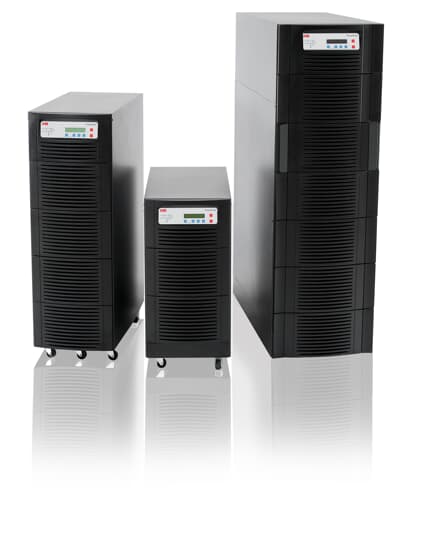Tech
Lights On, Business Strong: Mastering UPS Services

Introduction
In the fast-paced landscape of today’s business environment, where uninterrupted connectivity and seamless operations are paramount, mastering Uninterruptible Power Supply (UPS) services has become a critical aspect of ensuring resilience and continuity. Our guide, “Lights On, Business Strong: Mastering UPS Services,” is designed to illuminate the path to a robust power infrastructure, empowering businesses to navigate through disruptions and emerge stronger than ever.
In the face of power outages, electrical disturbances, or unforeseen disasters, the ability to keep the lights on symbolizes more than just a reliable power source. It represents the unwavering strength of a business that remains operational, adaptive, and impervious to external challenges. “Lights On, Business Strong” encapsulates the core principle of resilience, emphasizing that a well-mastered UPS service is the key to maintaining business strength under any circumstance.
“Mastering UPS Services” speaks to the need for a comprehensive understanding and effective utilization of Uninterruptible Power Supply systems. From selecting the right UPS type to implementing redundancy, conducting regular maintenance, and fostering strategic partnerships, this guide delves into the intricacies of UPS management. It serves as a beacon for businesses seeking not just a backup power solution but a holistic approach to fortifying their infrastructure against power-related vulnerabilities.
Lights On, Business Strong: Mastering UPS Services
Lights On, Business Strong: Mastering UPS Services” suggests a focus on optimizing and leveraging Uninterruptible Power Supply (UPS) services to ensure the continuity and strength of a business’s operations.
1. Understanding UPS Basics:
Types of UPS Systems:
- Standby UPS: Suitable for smaller setups with occasional power disruptions.
- Line-Interactive UPS: Offers more advanced protection with automatic voltage regulation.
- Online (Double-Conversion) UPS: Provides the highest level of protection by continuously filtering and regulating incoming power.
2. Assessing Business Needs:
Critical Systems Identification:
- Work closely with department heads and IT professionals to identify mission-critical systems.
- Prioritize these systems based on their importance to business operations.
3. Right Sizing:
Capacity Planning:
- Use power monitoring tools to assess the energy consumption of connected devices.
- Consider future expansion when determining the appropriate UPS capacity.
4. Redundancy and Reliability:
N+1 Configuration:
- Implement a redundant setup, ensuring seamless operations even if one UPS unit fails.
- Conduct regular tests to verify the failover process.
5. Regular Maintenance:
Scheduled Inspections:
- Set up a regular maintenance calendar for UPS systems.
- Inspect for physical damage, loose connections, and signs of wear.
6. Battery Management:
Battery Replacement Plan:
- Monitor battery health through regular testing.
- Replace batteries based on their expected lifespan or as soon as signs of degradation appear.
7. Monitoring and Management:
Remote Monitoring:
- Utilize software solutions for remote monitoring and management of UPS systems.
- Implement alert systems to notify administrators of any potential issues.
8. Training and Documentation:
Staff Training:
- Provide training sessions for IT and facilities staff on UPS system operation and maintenance.
- Conduct regular drills to ensure staff is familiar with emergency procedures.
Documentation:
- Maintain up-to-date documentation for all UPS systems, including configuration details and historical performance data.
9. Energy Efficiency:
Green UPS Options:
- Consider UPS systems with energy-saving features, such as load shedding during low-demand periods.
- Explore options for reclaiming energy during braking cycles, especially in larger setups.
10. Emergency Preparedness:
Disaster Recovery Plan:
- Integrate UPS systems into the broader disaster recovery plan.
- Identify alternative power sources, such as generators, to complement UPS capabilities during extended outages.
11. Vendor Relationships:
Partnerships with UPS Providers:
- Regularly communicate with UPS service providers to stay informed about updates and advancements.
- Review service level agreements (SLAs) and explore opportunities for collaborative problem-solving.
By implementing these strategies and maintaining a proactive approach to UPS services, businesses can ensure that their critical operations remain resilient, minimizing the impact of power disruptions on productivity and data integrity.
Conclusion
In conclusion, “Lights On, Business Strong: Mastering UPS Services” serves as a comprehensive guide for businesses aiming not just to endure power-related challenges but to emerge stronger and more resilient. By navigating through the intricacies of Uninterruptible Power Supply systems and implementing strategic measures, businesses can ensure a continuous, reliable power supply that keeps operations running smoothly, even in the face of unforeseen disruptions.
In the dynamic landscape of modern business, the ability to master UPS services isn’t just about keeping the lights on; it’s about fortifying the very foundation of business strength. This guide is a testament to the power of preparation, knowledge, and strategic implementation, enabling businesses not only to endure challenges but to thrive in the face of adversity.
As businesses navigate the complexities of an ever-evolving landscape, the mastery of UPS services becomes an indispensable asset. “Lights On, Business Strong” isn’t just a catchphrase; it’s a rallying cry for businesses to illuminate their path to resilience, ensuring that, regardless of external disruptions, they can continue to shine brightly in the marketplace.

You must be logged in to post a comment Login